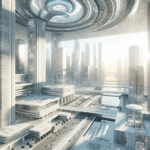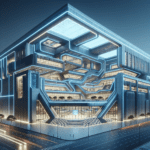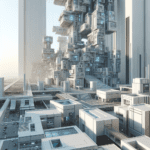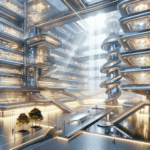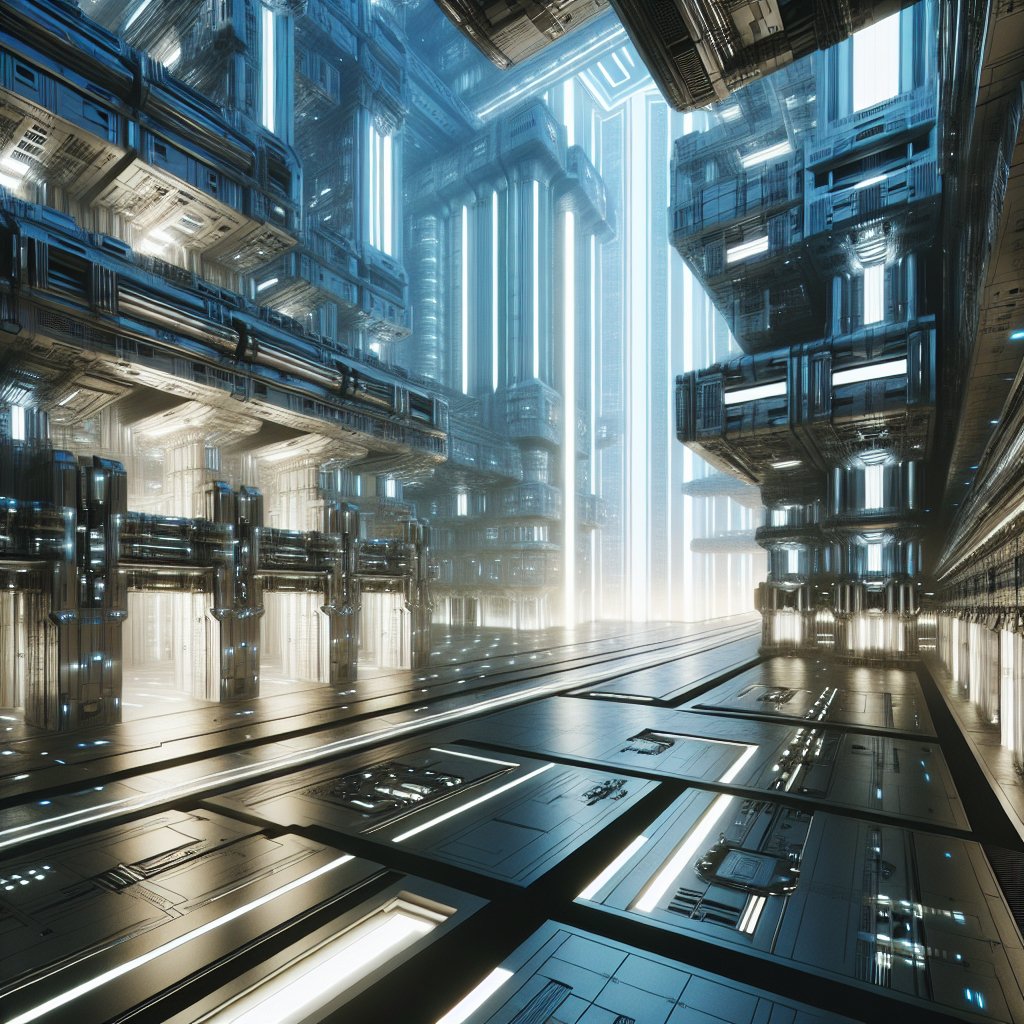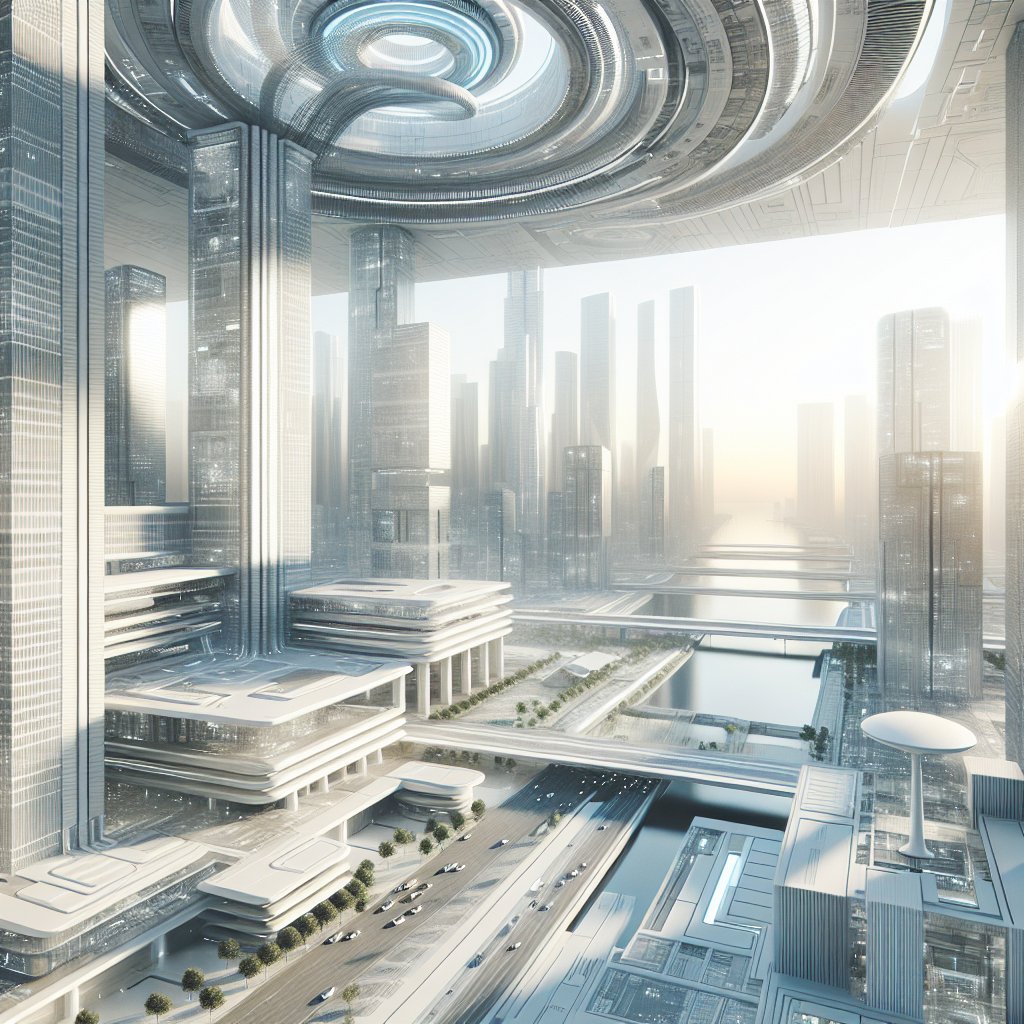In the realm of futuristic architecture, the concept of high-tech underground structures is gaining significant traction. As urban spaces become increasingly congested and environmental concerns rise, architects and engineers are turning their gaze beneath the surface to explore innovative solutions for sustainable living and working environments. This article delves into the fascinating world of underground architecture, examining its potential to revolutionize the way we think about space and design.
The Rise of Underground Architecture
The idea of building underground is not entirely new. For centuries, humans have sought refuge beneath the earth’s surface, from ancient cave dwellings to modern-day bunkers. However, the advent of advanced technology and materials has opened up new possibilities for creating sophisticated underground spaces that are both functional and aesthetically pleasing. The rise of underground architecture is driven by several factors, including urbanization, climate change, and the need for sustainable development.
As cities continue to expand, the demand for land increases, leading to a scarcity of available space for new construction. This has prompted architects to look underground as a viable alternative for development. By utilizing the space beneath our feet, cities can accommodate growing populations without encroaching on valuable green spaces or agricultural land. Moreover, underground structures offer unique advantages in terms of energy efficiency and environmental impact.
One of the key benefits of underground architecture is its ability to maintain a stable temperature, reducing the need for heating and cooling systems. This is particularly advantageous in regions with extreme climates, where energy consumption for temperature regulation is a significant concern. Additionally, underground buildings can be designed to harness geothermal energy, further enhancing their sustainability credentials.
Innovative Designs and Technologies
The development of high-tech underground architecture is characterized by innovative designs and cutting-edge technologies. Architects are pushing the boundaries of what is possible, creating spaces that are not only functional but also visually stunning. One of the most exciting aspects of underground architecture is the ability to integrate natural elements into the design, creating harmonious environments that blur the line between the built and natural worlds.
Advanced materials and construction techniques play a crucial role in the realization of underground projects. For instance, the use of reinforced concrete and steel allows for the creation of large, open spaces without the need for supporting columns. This enables architects to design flexible layouts that can be easily adapted to different uses. Additionally, the incorporation of smart technologies, such as automated lighting and climate control systems, enhances the functionality and comfort of underground spaces.
One notable example of innovative underground architecture is the Lowline project in New York City. This ambitious initiative aims to transform an abandoned underground trolley terminal into a vibrant public park, complete with lush greenery and natural light. The project utilizes cutting-edge solar technology to channel sunlight into the subterranean space, creating a unique environment that is both sustainable and inviting.
Another groundbreaking project is the Earthscraper concept, which envisions a 65-story inverted skyscraper extending deep into the ground beneath Mexico City. This visionary design seeks to address the challenges of urban density and environmental sustainability by creating a self-sufficient community with residential, commercial, and cultural spaces. The Earthscraper is designed to minimize its environmental footprint, utilizing renewable energy sources and advanced waste management systems.
Challenges and Considerations
While the potential of underground architecture is immense, it is not without its challenges. One of the primary concerns is the cost of construction, which can be significantly higher than traditional above-ground buildings. Excavation and reinforcement of underground spaces require specialized equipment and expertise, adding to the overall expense of the project. Additionally, the need for advanced ventilation and lighting systems can further increase costs.
Another consideration is the psychological impact of living and working underground. Humans have an innate connection to the natural world, and the absence of natural light and views can affect mental well-being. To address this, architects are incorporating biophilic design principles into underground spaces, integrating elements such as natural light, greenery, and water features to create environments that promote health and well-being.
Furthermore, the regulatory and legal aspects of underground construction can pose challenges. Building codes and zoning regulations may not always accommodate subterranean development, requiring architects and developers to navigate complex approval processes. Collaboration with local authorities and stakeholders is essential to ensure that underground projects comply with all necessary regulations and standards.
The Future of Underground Architecture
As technology continues to advance and the need for sustainable development becomes more pressing, the future of underground architecture looks promising. The integration of artificial intelligence and robotics into construction processes could further reduce costs and improve efficiency, making underground projects more accessible and feasible. Additionally, the growing interest in space exploration and colonization may drive further innovation in underground architecture, as similar principles can be applied to building habitats on other planets.
In conclusion, high-tech underground architecture represents a bold and innovative approach to addressing the challenges of urbanization and environmental sustainability. By reimagining the potential of the space beneath our feet, architects and engineers are paving the way for a new era of design that prioritizes functionality, aesthetics, and ecological responsibility. As we continue to explore the possibilities of underground architecture, we may find that the future of our cities lies not in the sky, but beneath the surface.
